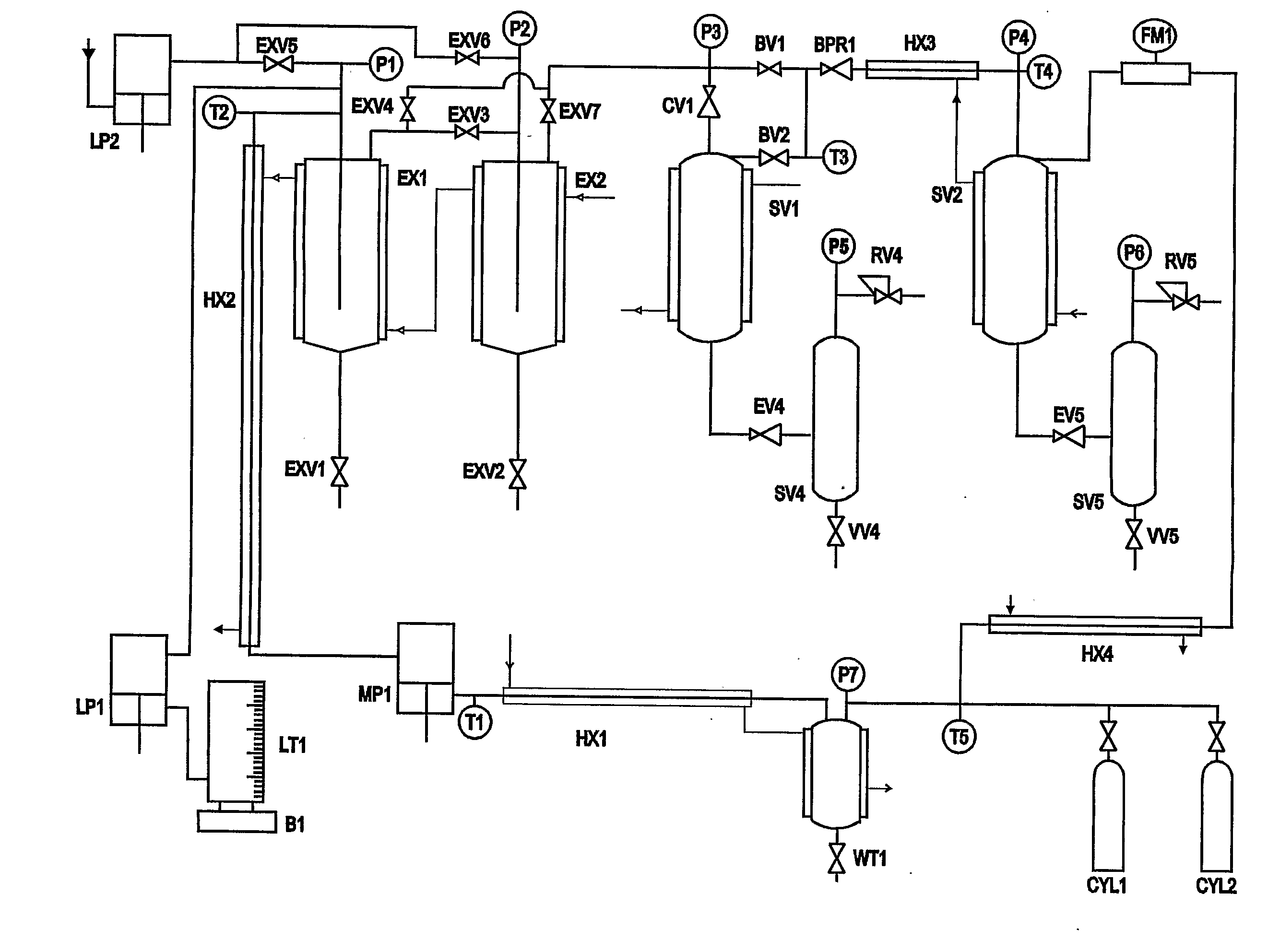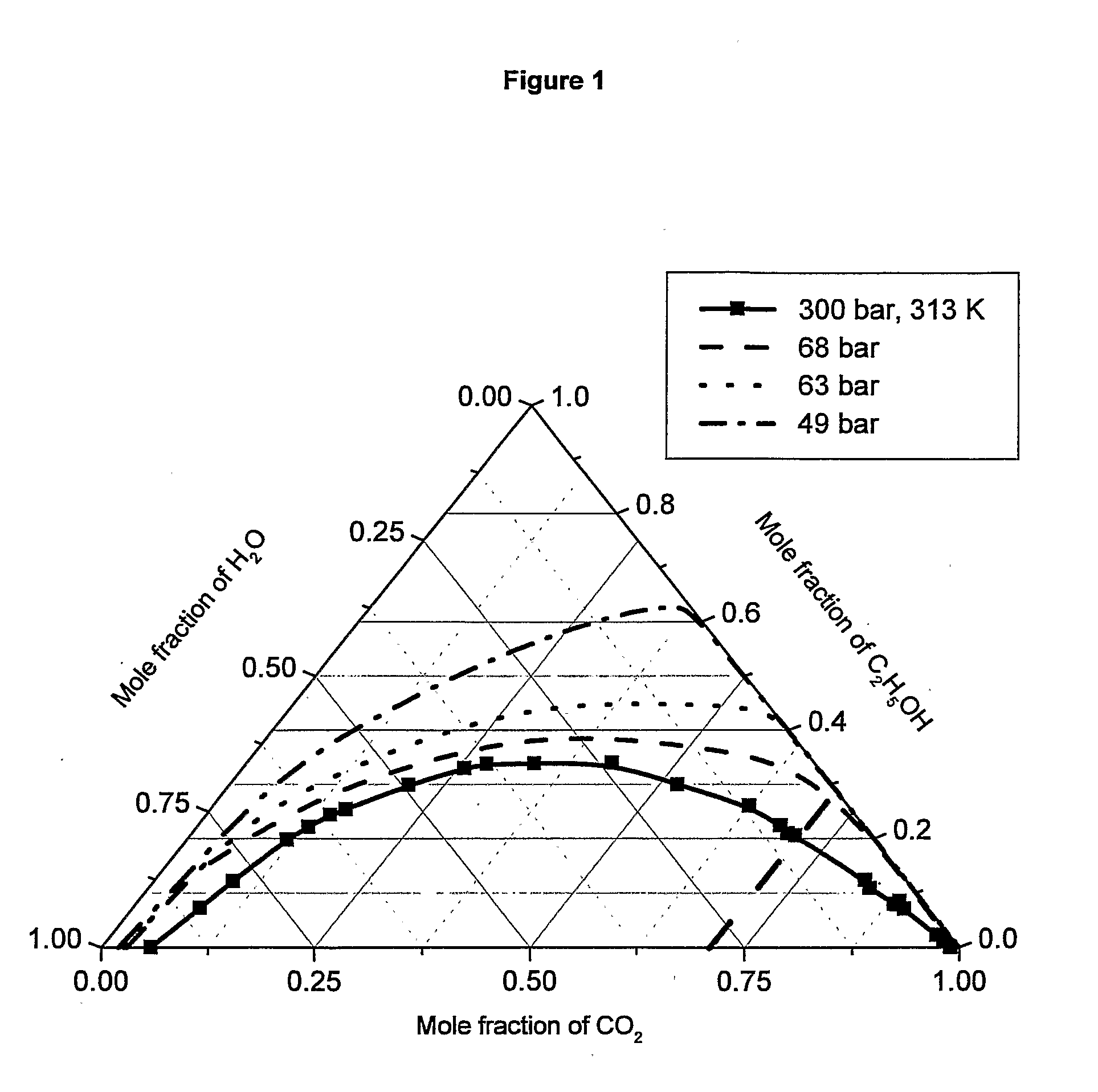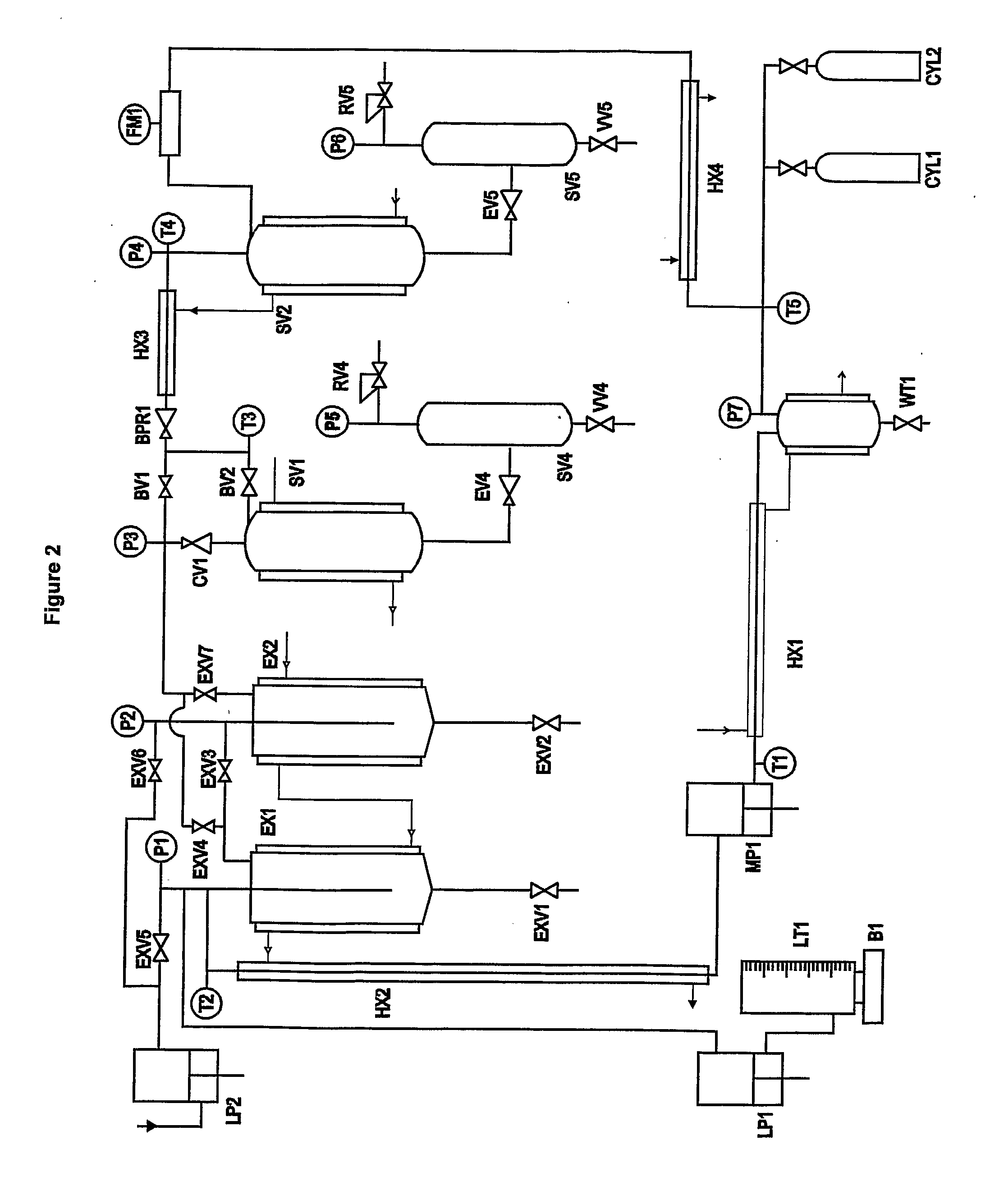Near-critical fluid extraction process
- Summary
- Abstract
- Description
- Claims
- Application Information
AI Technical Summary
Benefits of technology
Problems solved by technology
Method used
Image
Examples
example 1
Echinacea Purpurea Aqueous-Organic Solution (Aerial Portions)
[0112]This example demonstrates a process for the separation of active components, phenolics and alkamides, from water / ethanol solutions, using a continuous anti-solvent / extraction process. A commercial hydroalcoholic (water / ethanol) solution obtained by the solvent extraction of the dried aerial portions of Echinacea Purpurea was used. The ethanol content of the hydroalcoholic solvent (extract-free basis) was 93%. The Echinacea Purpurea solution was contacted with supercritical CO2 in the extraction vessel at 280 bar and 60° C. The raffinate fraction was recovered from the bottom of the extraction vessel at regular time intervals. The extract was recovered from a single separator operated at 30 bar and 60° C.
[0113]The ratio of feed liquid (Echinacea tops hydroalcoholic tincture) to solvent (supercritical CO2) was varied over the range 0.012 to 0.25 to determine the effect on the degree of separation between alkamides (lip...
example 2
Echinacea Augustifolia Aqueous-Organic Solution (Roots)
[0116]This example demonstrates a process for the separation of active components, phenolics and alkamides, from water / ethanol solutions, using a continuous anti-solvent / extraction process. A commercial hydroalcoholic (water / ethanol) solution obtained by the solvent extraction of the dried roots of Echinacea Augustifolia was used. The ethanol content of the hydroalcoholic solvent (extract-free basis) was 93%. The experimental method used and analysis methods were the same as that used in Example 1.
[0117]The results are shown in Table 2 for the raffinate and extract samples respectively at specified solvent solution to CO2 ratios. This example shows that supercritical anti-solvent fractionation can separate the active alkamide components, which are concentrated in the in the extract, and the active phenolic components, which are concentrated in the raffinate. The example also shows that the ratio of solvent to feed has little inf...
example 3
Sage Aqueous-Organic Solution
[0118]This example demonstrates the supercritical anti-solvent fractionation process for separating hydrophilic polyphenolics, lipophilic antioxidants, and flavour / aroma compounds into three separate fractions from water / ethanol solutions. The ethanol / water solutions were obtained by the solvent extraction of dried Dalmatian sage leaf. Extraction of dry Sage leaf was carried out in a stirred tank. Plant material was ground in a knife mill to a particle size of around 0.5-1 mm. Approximately 2 kg of plant material was added to the stirred tank and then solvent (70:30 ethanol:water mass ratio) was added until the plant material was submerged. The total ratio of solvent to solids was 3:1 (volume solvent / mass of solids). The tank was stirred for 3 hours at 40° C. The tincture was separated from the plant material by filtration under vacuum to give the feed solution. Analysis of the sage feed material, hydroalcoholic extract, and extracts and raffinates from ...
PUM
 Login to View More
Login to View More Abstract
Description
Claims
Application Information
 Login to View More
Login to View More - R&D
- Intellectual Property
- Life Sciences
- Materials
- Tech Scout
- Unparalleled Data Quality
- Higher Quality Content
- 60% Fewer Hallucinations
Browse by: Latest US Patents, China's latest patents, Technical Efficacy Thesaurus, Application Domain, Technology Topic, Popular Technical Reports.
© 2025 PatSnap. All rights reserved.Legal|Privacy policy|Modern Slavery Act Transparency Statement|Sitemap|About US| Contact US: help@patsnap.com



